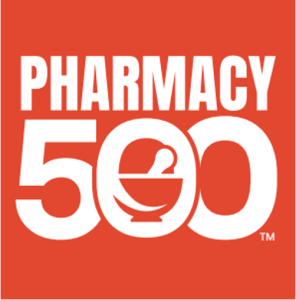Introduction
In the pharmacy industry, patient safety is a top priority. And that means ensuring the right medications end up in the right hands to be used as prescribed.
Unfortunately, drug diversion poses a major threat to the industry. The illegal distribution or misuse of prescription drugs is becoming increasingly common. Its impact on public health and safety simply can’t be ignored.
In this article, we will take a close look at drug diversion in the pharmacy industry. We’ll start by covering common signs of drug diversion and where the issue stands today along with what the future holds for mitigating this illegal and unsafe act.

The Current State of Drug Diversion
Drug diversion in the pharmacy industry is the illegal distribution, possession, or use of prescription drugs for purposes not intended by the prescriber. There is a variety of ways this may occur including through individuals you know (family, friends, etc), healthcare providers, or businesses like drug manufacturing companies.
The most common methods and techniques used in drug diversion are doctor shopping, selling one’s prescription drugs, illegal internet pharmacies, drug theft, prescription pad theft and forgery, and illicit prescribing. The Drug Enforcement Administration (DEA) has identified anabolic steroids, central nervous system depressants, hallucinogens, opioids, and stimulants as classes of drugs with high potential for abuse.1 Signs of drug diversion include patients telling strange stories at the pharmacy, reluctance to cooperate, unusually high or low understanding of medications, strange patient symptoms, and specific drug requests. These may indicate one is using or planning to use a prescription drug for reasons other than prescribed.2
Prescription drug diversion has a poor impact on public health and safety. Patient safety is at risk and it can result in consequences like inadequate pain relief, can be costly to a community by damaging its reputation, may lead to major civil and criminal monetary penalties with law enforcement involvement, a decrease in mental health, and exposure to infectious diseases from contaminated needles and drugs. To protect public health prevention is the first strategy to put in place. Healthcare facilities all require systems in place to guard against theft and diversion of controlled substances, for example, the use of safes in pharmacies. All staff is required to understand and comply with protocols regarding controlled substances. These healthcare facilities also must have systems for early detection like video monitoring of high-risk areas, active monitoring of dispensing data, and staff who are alert for signs of diversion activity.3
Challenges faced by the pharmacy industry in combating drug diversion include drug shortages, staff turnover the pressure to underfill prescriptions, delayed access to pain relief for patients truly in need, compromised care due to falsified health records, and much more. To help combat these challenges, there are currently seven key organizations on the front lines of drug diversion. These healthcare organizations are NABP, NCSBN, NASCSA, CDC, DEA, NADDI, and IHFDA. These groups help to grow resources, understanding, and collaboration around inappropriate drug use in healthcare.4
Technological Advances and Innovations to Stop Drug Diversion
The FDA is committed to addressing the national opioid/drug diversion crisis by encouraging medical products and healthcare innovation to prevent all new cases of abuse and treat those who are addicted. Diagnostic tests and digital health technologies were challenged to be used to help.5
Integration of electronic prescribing systems, prescription drug monitoring programs (PDMPs), data analytics, artificial intelligence, electronic verification, inventory management systems, and advanced medication tracking have helped combat drug diversion. Starting with electronic prescribing which allows providers to access medication history and make better clinical decisions regarding managing a patient’s medication. This further prevents diversion and the misuse of drugs with a high potential for abuse by reducing the incidence of prescription theft and forgery. There are fewer incidences of forged prescriptions, prescription pad theft, and illicit prescribing when using electronics to transmit a prescription.6 The PDMP is another electronic innovation designed for drug diversion. This database collects information on dispensed federally controlled substances and, depending on state requirements, other potentially abusable prescription drugs. The PDMP can alert a healthcare professional to behavior like doctor shopping or pharmacy shopping which are two common methods used in drug diversion.7
Data analytic systems also play a key role in detecting and preventing drug diversion. Consolidated datasets and supervised machine learning can detect known diversion cases faster than existing detection methods. Most diversion goes undetected using traditional diversion detection with monthly usage reports since they suffer from low accuracy, specificity, and sensitivity. Incorporating machine learning and data analytics shows tremendous improvement in early and accurate diversion detection. Along with this, artificial intelligence was shown to help with machine learning and automate manual methods for detecting diversion in large datasets.8
Advancements have been made in medication tracking and inventory management systems. Medication tracking through PDMPs, specific national drug code (NDC) numbers, pharmacy records, and other state-run databases store all information and data on patients receiving specific medications. This helps when back-tracking and seeing if a patient may be participating in drug diversion, doctor shopping, and more. Inventory management systems store data and systemize and control the pharmacy’s medication process. Inventory management helps detect if any missing medications may have been stolen. Diversion can occur through illicit prescribing or through healthcare personnel selling prescriptions to patients, which is where inventory management comes in. It does not allow for numbers to be off regarding high-risk drugs and can prevent drug diversion specifically done by staff.9
Current and Future Regulatory and Legal Measures
Many controlled substances, depressants, and other high-risk medications manufactured for medical reasons are subject to abuse and are under legal control. The federal law requires all businesses that import, export, manufacture, or distribute controlled substances, all health professionals that dispense, administer, or prescribe, and all pharmacies that can fill prescriptions must register with the DEA themselves. The registrants must comply with these requirements related to drug security and recordkeeping for secure data protection. The DEA also monitors the movement of licit controlled substances across United States borders while issuing import and export permits for that movement. Everyone must comply with federal regulations regarding controlled substances but individual states may make their regulations as long as they are stricter than federal.10
Regulatory bodies, law enforcement, and pharmacies must all be on the same page as far as regulations, consequences, and reporting for preventing drug diversion. When there is suspected reporting, pharmacies and other healthcare systems must report to their local law enforcement and local fraud alert networks, the DEA, and the U.S. Department of Health and Human Services (DHHS). With everyone on the same page, the agencies, pharmacies, and law enforcement can help prevent and stop drug diversion through regulatory compliance.11 Penalties and consequences for drug diversion offenses include substantial fines and long imprisonment. Under the Controlled Substances Act (CSA), a conviction for drug diversion is a federal crime and can result in a fine of up to $250,000 and up to 10 years of federal imprisonment for each offense.12
Compliance requirements for pharmacies and healthcare professionals are important to stay up to date on. The most important part for professionals is to keep up with any regulatory change, correct procurement and storage, good prescribing practices, accurate preparation, dispensing, and administration, and compliant waste, removal, and, destruction of controlled substances. Another important requirement is DEA registration. The organization should be aware of DEA registrations under its control and appoint a registrant who will be accountable for the enforcement of requirements. The correct monitoring and surveillance should be installed and maintained while one’s organization is running as well.15
Education and Training on Diversion

Pharmacists and pharmacy staff have a big responsibility when it comes to being educated on drug diversion since this is where medications are dispensed. Multiple drug diversion training opportunities are available and help educate staff on when to report suspicious activities. Reducing the risk of drug diversion in your facility requires not just knowledge of the problem, but the right tools and procedures that contribute to a safer drug disposal program in your facility. Centers for Medicare and Medicaid Services (CMS) has a very informative infographic explaining drug diversion and what to do in the case of a suspicious event. Medical professionals should know that drugs should only be used as prescribed and disposed of properly, if you see someone under the influence of alcohol or drugs they may be using prescription drugs illicitly, and most importantly report suspicious behavior to local law enforcement and HHS.1
Collaboration with academic institutions to incorporate drug diversion awareness in pharmacy curricula should also be implemented. Educating young professionals who will be entering the pharmacy world soon on what to expect is essential. Having professionals enter the field with education on the topic can help prevent diversion from happening rather than teaching them about the matter after an event occurs.
Future Challenges and Opportunities
A recent trend in the drug diversion industry is the increase in fentanyl-related deaths and laced medications. Deaths due to fentanyl have continued to rise exponentially since 2021 and have not slowed down. It is crucial to increase awareness and decrease the demand for fentanyl since many people are now lacing prescription drugs with it. Practitioners should be cautious when inventorying personal items in the hospital, be cautious when having close patient encounters, and never take back a patient’s prescription medications.15
With the newest technology enhancements including artificial intelligence, telemedicine, virtual reality, and more new methods of drug diversion enforcement are available. These advancements will have a great impact on drug diversion prevention along with keeping and updating regulatory and policy adaptations to address new challenges that may present. Proactive drug diversion detection and prevention includes employee training and education, hotline reporting, job rotation, electronic prescribing for controlled substances, reconciling drug orders, securing delivery, and developing written policies and procedures at practice sites that are required for federal and each state laws.16
Conclusion
Drug diversion is a major threat to the pharmacy industry. With patient safety being the number one priority this poses a big concern when preparing, dispensing, and administering medications to patients. It is important to know the common signs of drug diversion, drugs that often get misused, your organization’s compliance standards, and what to do in the event of drug diversion suspicion.








